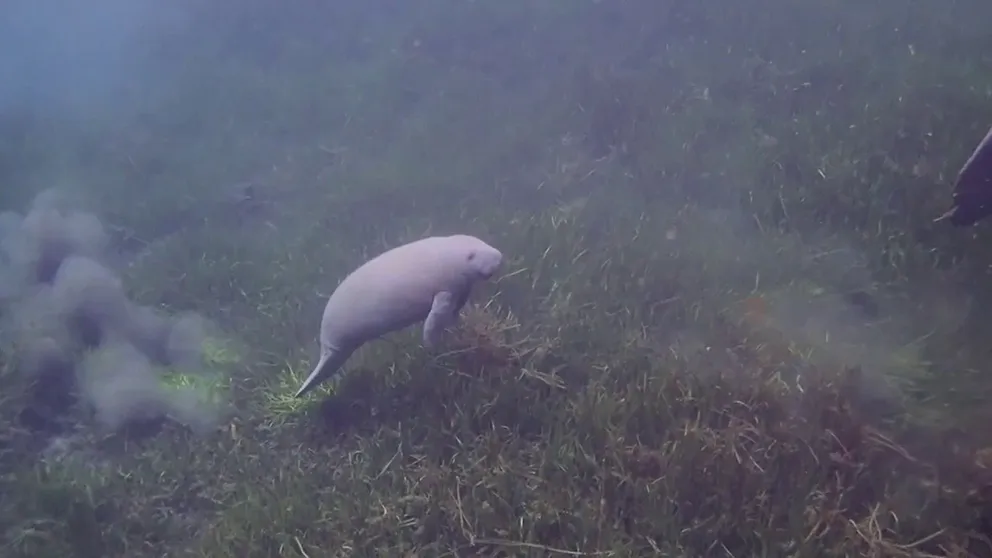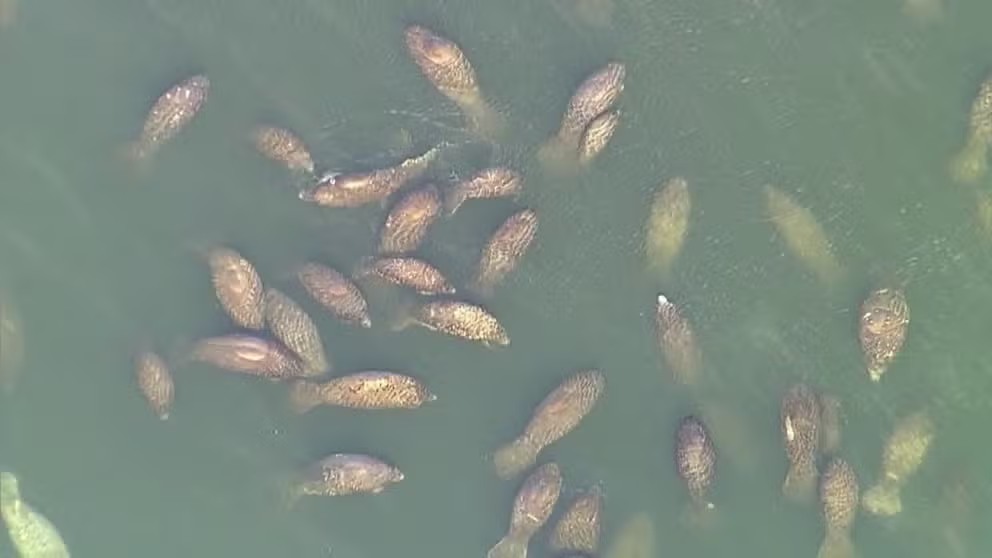How Hurricane Ian impacted Florida manatees
Scientists fear Hurricane Ian's floodwaters will mean a massive die-off of manatees. Hurricane Ian's record rainfall sparked algae blooms which kill seagrass, which is the main part of a manatee's diet.
Hurricane Ian triggers worries about manatees
The incredible amounts of rain and floodwaters generated by Hurricane Ian are causing algae blooms. Those blooms can kill off seagrass which manatees need to survive. Scientist worry about a die-off in the upcoming months.
ST. PETERSBURG, Fla. - November is Manatee Awareness Month in Florida, and the peaceful sea cow is entering an important time of year when its survival depends on humans.
Last year, more than 1,000 manatees died due in part to the loss of their main source of food, seagrass.
The largest contributor to the loss of that seagrass was algae blooms which are supported by the nutrient-rich freshwater runoff from inland and coastal areas.
DEADLY RED TIDE FEARED TO RETURN FOLLOWING HURRICANE IAN
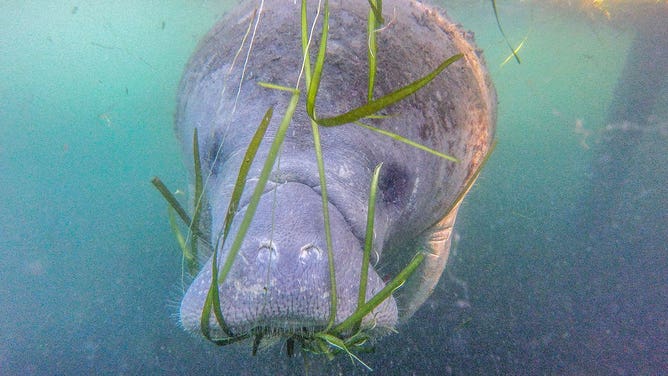
A manatee swims beside a tour boat in the Crystal River Preserve State Park on January 07, 2020, in Crystal River, Florida.
(Paul Rovere/Getty Images / Getty Images)
"We know in Florida over the last two years, we've lost 24% of our manatee population," shared J.P. Brooker, director of Florida Conservation for Ocean Conservancy. "In 2022 alone, as of October 21, we've lost 719. Manatees are dying because they're starving to death, they starve to death because our waterways are compromised."
The main waterways that manatees live in Bay Area rivers and coastal areas where seagrasses grow. Those areas were directly impacted in September as a natural disaster struck the state.
"Hurricane Ian was a major rainmaker, it was a major nutrient input source for nitrogen and phosphorus," said Brooker.
COLD WEATHER, STARVATION TAKES TOLL ON MANATEES DESPITE BIOLOGISTS' EFFORTS
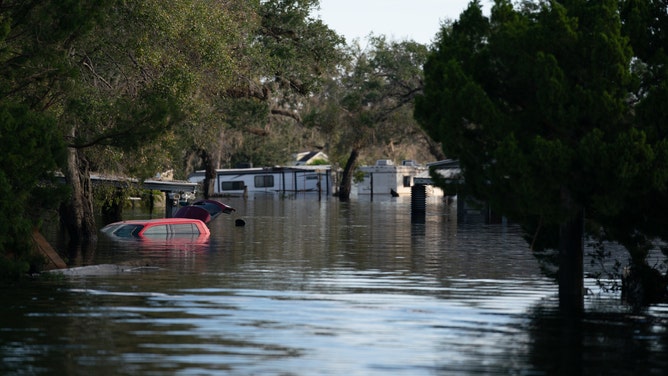
Camper trailers and vehicles are still partially submerged by floodwaters at the Peace River Campground on October 4, 2022 in Arcadia, Florida.
(Sean Rayford / Getty Images)
Those nutrients are from fertilizers from commercial and residential lawns and ornamental plants. Heavy rain and flooding events flood those areas washing the fertilizers into the rivers and canals that flow to the Gulf and Atlantic.
NASA photos showed the heavy freshwater runoff following Hurricane Ian.
ASTRONAUT ON ISS SPOTS FLORIDA'S MUDDY WOUNDS LEFT BY HURRICANE IAN
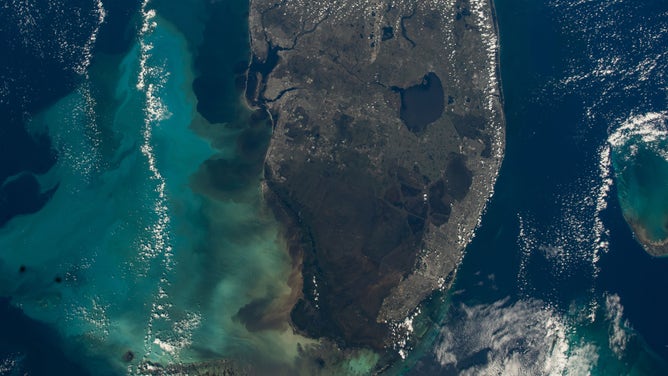
Flordia Post-Hurricane Ian
(NASA)
We can’t prevent a hurricane from hitting Florida, but there are ways that Floridians can help after a storm.
"We need consistent efforts in restoration to try to bring back seagrass resources and our seagrass meadows coast-wide," Booker said. "You would have to replant two acres of seagrass to approximate the services of one acre of seagrass in the wild. It's not just a matter of replanting and restoring habitat, it's also preserving the native seagrass that we still have and that's going to be done by making sure we keep nutrients out of the water and we reduce the impacts of these harmful algal events."
‘OH MY GOSH!’: CURIOUS GOLDEN RETRIEVER IN ALABAMA SPOOKS MANATEES AND HERSELF
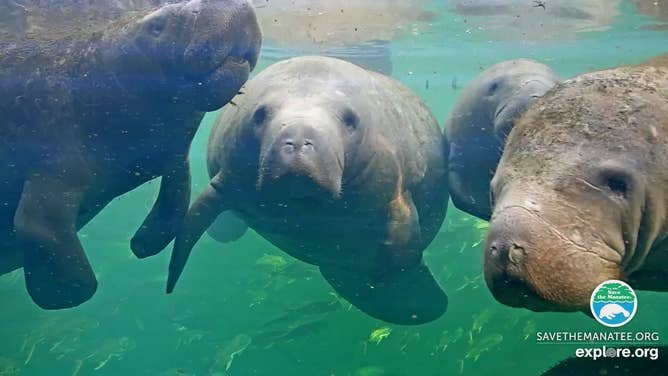
Manatees at Blue Spring State Park in Orange City, Florida. (Image credit: Save the Manatee Club)
(FOX Weather)
Bay Area cities and counties along the coast have fertilizer bans in effect in the summer months from June 1 through September 30. That helps to remove the nutrient source during the rainy season.
"We can't really afford to lose many more (manatees). Manatees really are the canary in the coal mine for a lot of Florida's water quality problem," Brooker stated. "Florida is home to manatees, so there's no migration. They live in Florida, that's where they want to be."
Manatees seek warm water at TECO Manatee Viewing Center
Hundreds of manatees gathered for warmth at the TECO Manatee Viewing Center near Tampa on Tuesday. (Video credit: FOX 13 Tampa Bay)
Residents want manatees here too.
Brooker admitted, "We as Floridians love manatees."
